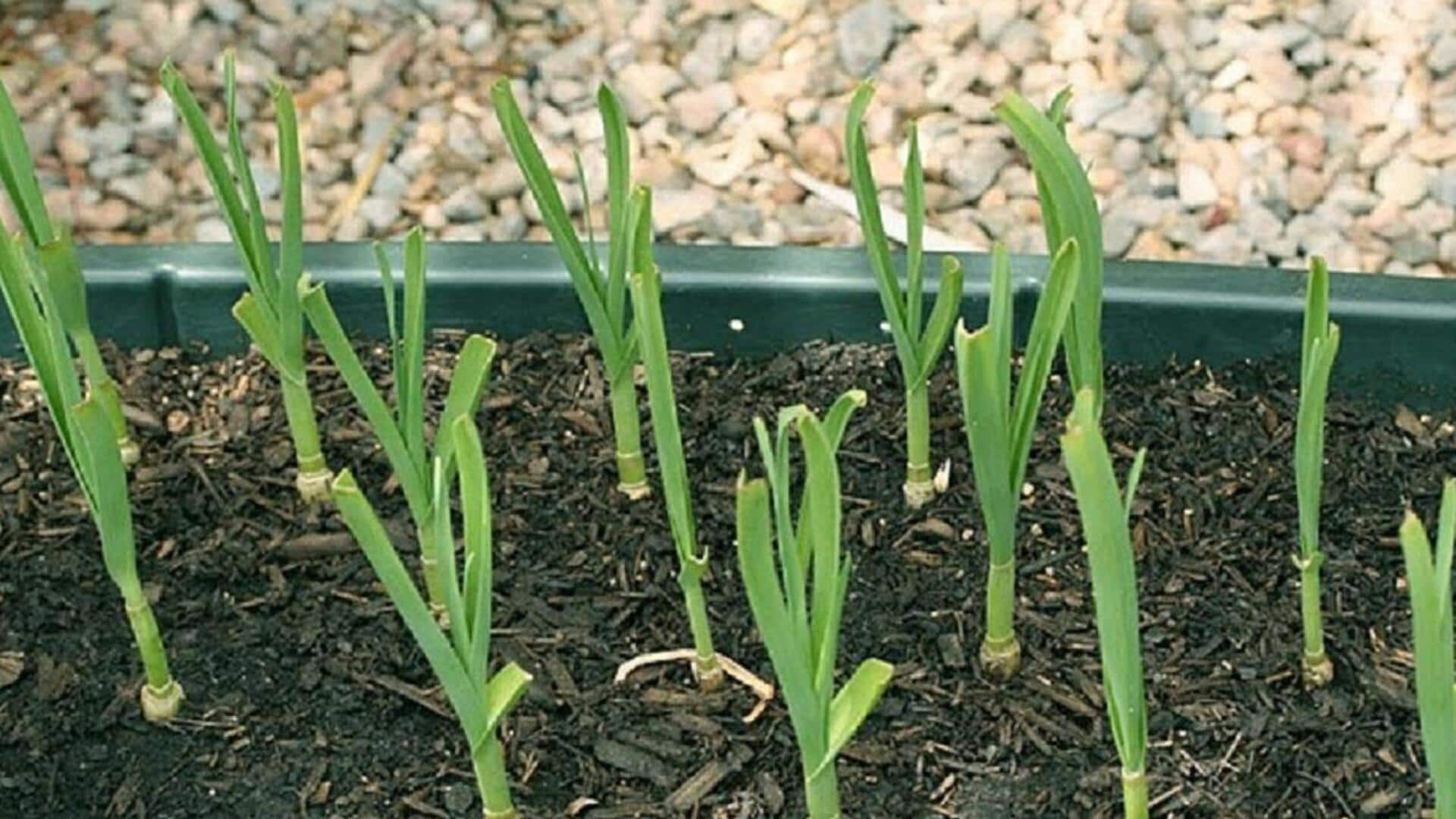
Glowing garlic greens: 5 flavorful garden tips
What's the story
Garlic, with its robust flavor and health-boosting properties, holds a place of honor in kitchens around the globe. Growing your own garlic adds a fresh dimension to your culinary adventures. This article provides five key tips for nurturing vibrant garlic greens, setting the stage for a bountiful harvest. By following these tips, gardeners can savor the full flavor of home-grown garlic, infusing their dishes with its aromatic essence.
Variety choice
Select the right variety
Picking the right type of garlic for your garden is key to a bountiful harvest. There are two primary kinds: softneck and hardneck. Softnecks do great in warmer climates and have a milder taste, while hardnecks love the cold and pack a stronger flavor punch. Doing a little homework on what each kind needs will help you choose the perfect variety for your garden's conditions.
Timing matters
Plant at the optimal time
Planting garlic in the fall, approximately six to eight weeks before the ground freezes, is key. This timing allows the roots to establish well before winter arrives. In regions with milder winters, you can postpone planting until late winter or early spring. Getting the timing right is crucial for developing strong roots, which form the foundation for healthy garlic growth.
Soil prep
Ensure proper soil conditions
Garlic thrives in well-drained soil enriched with organic matter. Before planting, work compost or well-rotted manure into your garden bed. This step enhances both soil fertility and structure. A slightly acidic to neutral pH (6-7) is most favorable for garlic. A soil test can be beneficial. It will guide you on what amendments are needed to create the perfect growing environment.
Spacing guide
Adequate spacing and depth
When planting garlic cloves, make sure to space them six inches apart and plant them two inches deep, with their pointed ends facing up. This specific spacing is crucial because it allows enough room for the bulbs to grow while maximizing the use of garden space. Overcrowded plants will compete for vital nutrients and sunlight, leading to notably smaller bulbs.
Maintenance key
Regular care and maintenance
Consistent watering is crucial in the early growth stages until bulbs start to develop. After that, you should decrease watering as you near harvest time to avoid rot. Mulching with straw or hay is beneficial as it conserves soil moisture, inhibits weed growth, and provides protection against temperature fluctuations during winter.